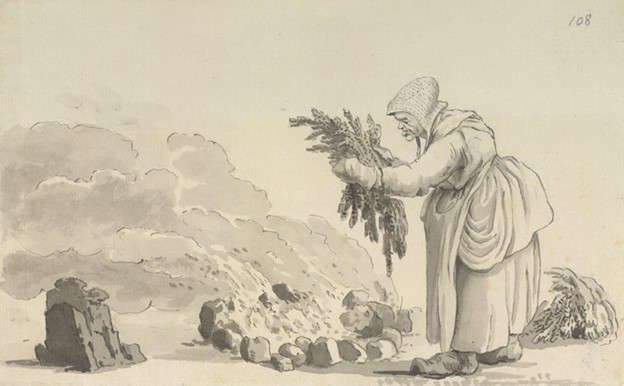Glassworts received their common name in 16th Century England to describe plants that yield an important ingredient for glass and soap making. The original English glasswort plants belong to the genus Salicornia; however, the term was quickly extended to include a variety of other halophytic plants from multiple genera. Glasswort plants sequester the sodium absorbed from the salt water into their tissues. When the plant is burned, the ashes of the plant convert this sodium into sodium carbonate (soda ash) or potassium oxide (potash) depending on the density of the plant’s salinity. Higher percentages of potash were collected from the ashes of non-salty plants and vice versa. The ashes are then rinsed, and the non-soluble components are filtered out and the solution is boiled dry to leave the key alkaline ingredient.
In glassmaking, three key ingredients are needed: formers (such as silica), fluxes, and stabilizers (such as lime). Both soda ash and potash are common fluxes that work to reduce the amount of energy needed to melt the formers by lowering the necessary furnace temperature. Potash glass is slightly denser and more durable than soda glass, and it gives more shine and refinement. Soda ash is more commonly used and is less expensive than potash. Soda ash constitutes the base of most varieties of glassware.
Currently, there is a broad range of soda ash grades and densities on the market. More contemporary sources of soda ash include the mineral trona (a non-marine evaporate mineral), the mineral nahcolite (a colorless or white carbonate mineral), or one of several chemical processes used to create synthetic soda ash.
Salicornia species may no longer be used to make glass in our contemporary world, but its ecological and economic value are just as significant – if not more – in agriculture and aquaculture.

A drawing of a 16th Century woman in Northumberland burning kelp for soda ash before the development of industrial chemical processes.
Photo credit: British Library Online Gallery https://www.bl.uk/onlinegallery/onlineex/grimms/workplay/burnkelp/largeimage74140.html
